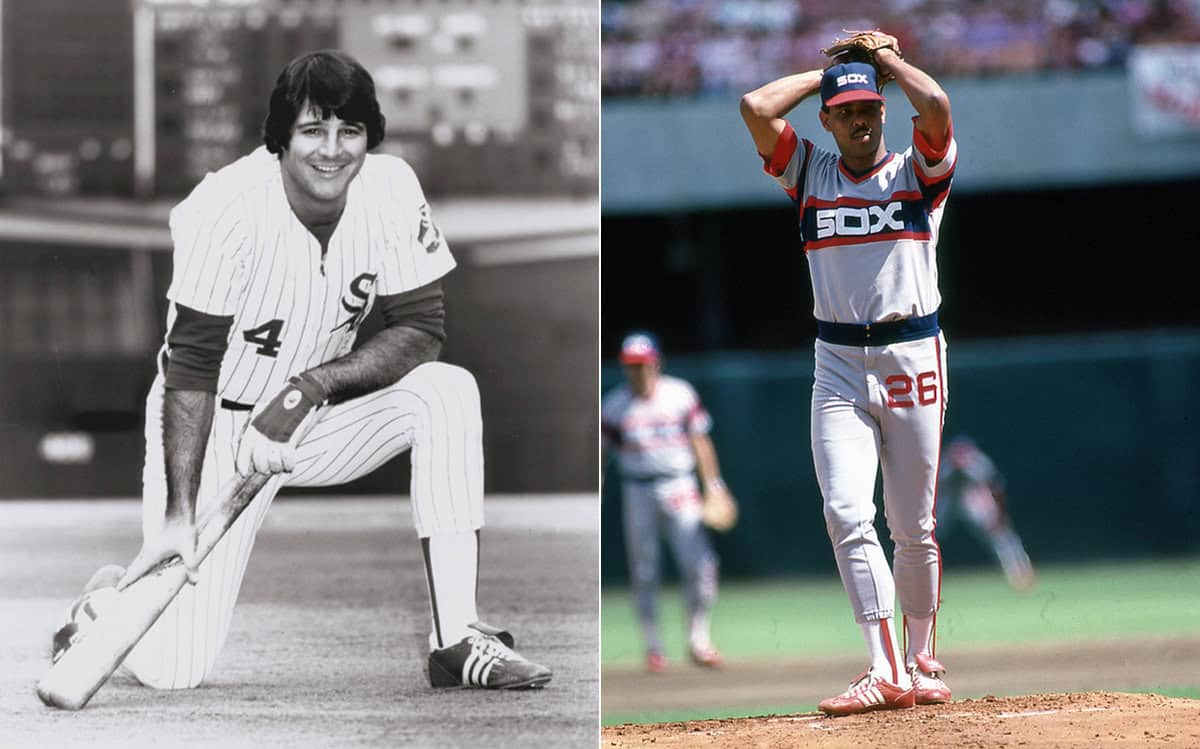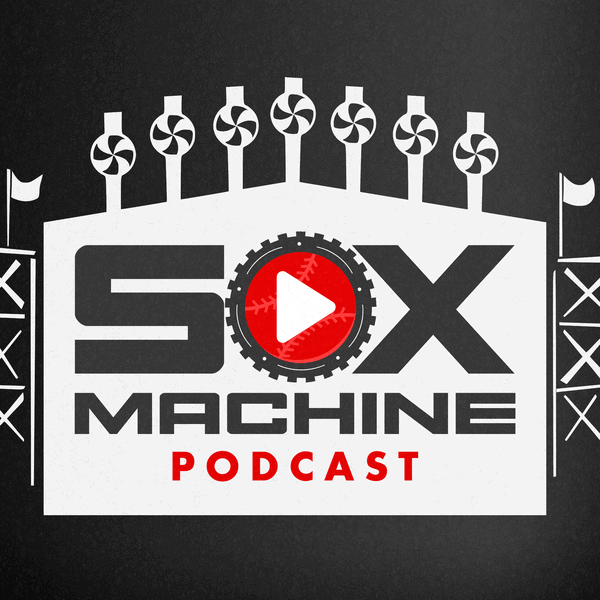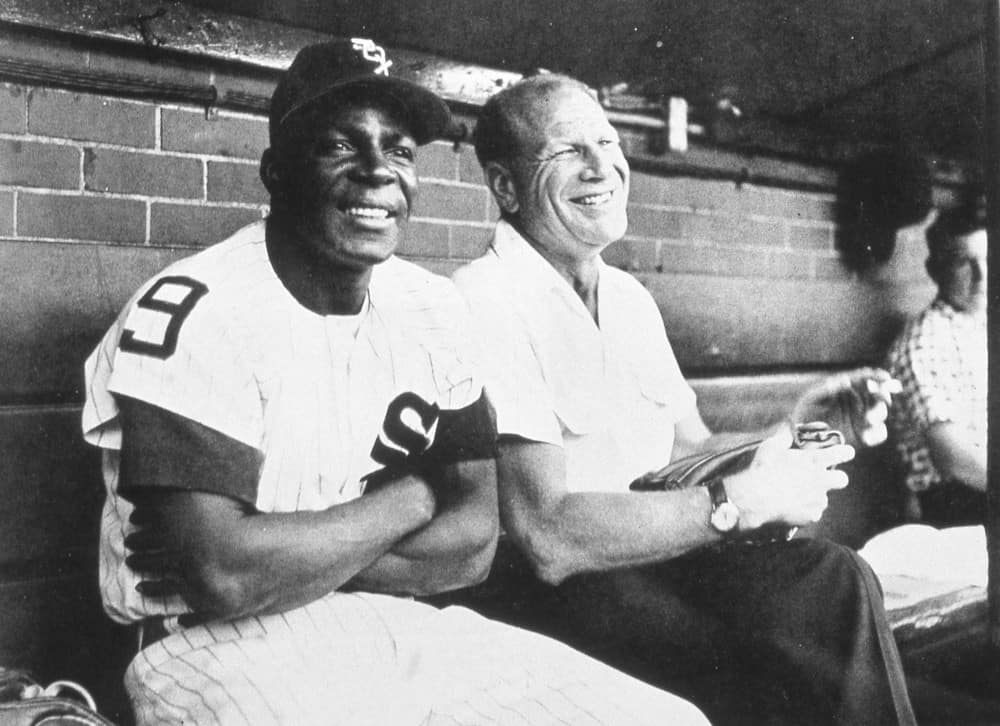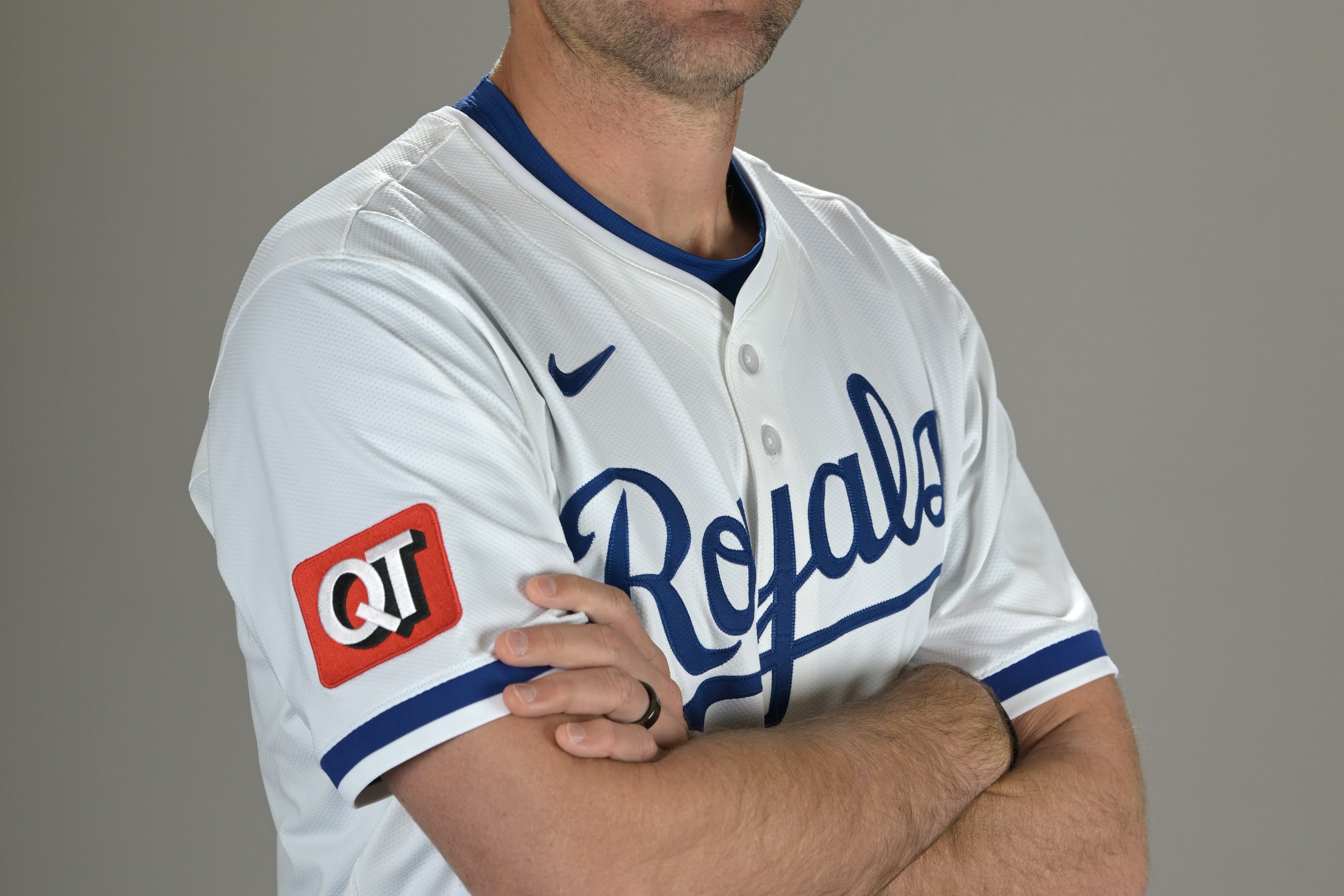In chronological order:
Johnny Jeter
Born: Oct. 24, 1944
Died: Jan. 16, 2024
Played for White Sox: 1973
Three different members of the Jeter family have played for the White Sox organization, and Johnny managed to play the most. He hit .240/.260/.383 over 313 plate appearances for the White Sox in 1973, mainly as the short-side platoon partner of Pat Kelly in right field. The White Sox acquired him the previous October for reliever Vicente Romo, who was limited to 28 games in 1972 because of a sore arm.
Jeter didn't make the Opening Day roster the following season, as the White Sox rolled with Buddy Bradford as the veteran fourth outfielder, backed by emerging young outfielders like Jerry Hairston and Brian Downing. Jeter considered not reporting to Triple-A Iowa, and the White Sox traded him to Cleveland, where a slightly more favorable depth chart allowed him to appear in six more games to close out his MLB career.
Nearly 30 years later, Jeter's son Shawn would follow in his footsteps, albeit briefly, going 2-for-18 for the 1992 White Sox in his only MLB action. Clyde Jeter, Johnny's younger brother, spent a year in the White Sox system for A-ball Appleton in 1974.
Despite the fairly impressive athletic legacy, including an induction to Grambling Legends Hall of Fame in 2021, there's surprisingly little out there about Jeter's life. His obituary is three sentences.
Tom Qualters
Born: April 1, 1935
Died: Feb. 15, 2024
Played for White Sox: 1958
RIP Baseball obit
Qualters appeared in 26 games for the 1958 White Sox, posting a 4.19 ERA over 45 innings out of the bullpen. The White Sox acquired him from the Phillies at the end of April, and he primarily pitched in games that were lost causes. The Sox went 2-25 in games where Qualters pitched, but Qualters didn't factor into any decision because the Sox were trailing in those 25 losses by the time he entered. It wasn't until Aaron Bummer in 2019 (with Bryan Shaw doing the same in 2023) that the White Sox had another reliever go more than 20 appearances or 40 innings without a win or a loss all season.
Qualters spent the entirety of the 1959 season in Double-A Indianapolis due to the Sox's superior pitching depth before the Astros selected him in the expansion draft, closing the White Sox chapter of his career. All of that is fairly standard, but little about Qualters' pre-Sox career fit that definition, because he was a bonus baby.
Bonus babies were players who signed bonuses exceeding $4,000 between 1947 and 1965. For much of this period, such outlays triggered the "bonus rule," and between 1953 and 1957, the team signing that player had to carry him on the 40-man roster for two years. This was designed to stop the big-money teams from stockpiling prospects in a way the rest of the league couldn't or wouldn't, and Qualters ended up being perhaps the most severe case. He signed a $40,000 bonus, and then proceeded to pitch in one game over his first two seasons. He was lit up for six runs over one-third of an inning in his MLB debut on Sept. 13, 1953, giving him a 162 ERA for the year, and then he spent the entire 1954 season on the Philadelphia roster without pitching in a game. From Stephen D. Boren's SABR article about Qualters' 1954 season:
Qualters went to the ballpark every day. He often pitched batting practice. Since they did not use any protective screen, this was a potential problem. Granny Hamner once lined a pitch that hit the bill of Qualters’s cap. All pitchers, including Tom, had to have batting practice before the position players did. However, it was the batboy who pitched batting practice, not a pitcher or even a coach. After that, Qualters mainly went to the bullpen to watch the game, although he occasionally sat on the bench. He never was told by the managers or the coaches if or when he would pitch. He did not receive any pitching instructions from the coaches or managers until he was finally sold to the Chicago White Sox in 1958. There he was managed by Al Lopez and coached by legendary pitching coach Ray Berres.
Qualters did appear in six games for the Phillies in 1957 after a couple of years in the minors, including time in Miami with Satchel Paige that proved instrumental to salvaging a career.
José DeLeón
Born: Dec. 20, 1960
Died: Feb. 25, 2024
Played for White Sox: 1986-87; 1993-95
SABR Bio | RIP Baseball obit
Growing up, I knew José DeLéon as the guy for which Hawk Harrelson traded Bobby Bonilla. The White Sox attempted to buy low on DeLéon, who went 2-19 with a 4.70 ERA for the Pirates in 1985 and had a miserable two months in Pittsburgh in 1986 before Hawk swooped in.
"DeLéon has one of the top 10 arms in baseball," Harrelson said in an Ed Sherman article for the Chicago Tribune on July 24, 1986, on the strength of a power fastball-forkball combination. While he didn't reach elite status with the White Sox, they were right to see a depressed asset. DeLeon immediately turned it around on the South Side, posting a 2.96 ERA over 79 innings over the last two months of 1986, and then going 11-12 with a 4.02 ERA over 206 innings in 1987.
The only problem is that DeLéon cost a considerable prospect in Bonilla, who had fared decently while filling in for Greg Walker in his rookie season. After the trade, Bonilla made leaps with Pittsburgh, making four consecutive All-Star teams with three Silver Sluggers and two top-three NL MVP finishes from 1988 to 1991. It wasn't Harrelson's worst move during his only season as GM -- that was firing Tony La Russa -- but it was up there.
That said, the White Sox involved DeLéon in a trade three more times over the course of his career, and the sum of those three deals made up for it. Just before spring training in 1988, they sent DeLéon to the Cardinals for Lance Johnson, Ricky Horton and cash, and Johnson ended up holding down center field for the White Sox from 1989 to 1995. During that time, the White Sox reacquired DeLéon from the Phillies at the trade deadline in 1993 for Bobby Thigpen, which turned nothing (Thigpen was shot) into something (DeLeón provided useful long relief in 1993, then took on heavier lifting in 1994).
Moreover, DeLéon remained viable long enough to pitch for the White Sox into the 1995 season, when he was traded to Montreal for Jeff Shaw. Neither pitcher impressed with their new club, but Shaw ended up heading to Cincinnati, where he ended up being traded to the Dodgers for Paul Konerko. If you want to play "Sliding Doors," if Harrelson didn't trade for DeLéon the first time, perhaps Konerko's White Sox career never happens.
Joe Shipley
Born: May 9, 1935
Died: May 1, 2024
Played for White Sox: 1963
RIP Baseball obit
On July 6, 1963, Joe Horlen was sent down to Triple-A Indianapolis after struggling to maintain effectiveness bouncing between the rotation and bullpen. He returned a few weeks later, throwing seven strong innings in a 4-3 victory over the Detroit Tigers. He finished the season with a 2.76 ERA over his final 15 games, 13 of which were starts, and that put him on course for a five-year run of dominance. From 1964 to 1968, Horlen posted a 2.32 ERA while throwing an average of 224 innings a season.
In both cases, Shipley was the corresponding transaction. He took Horlen's spot on the roster at the beginning of that month, and Horlen took Shipley's spot at the end of it. In between, Shipley only appeared in three games, allowing seven runs (three earned) on nine hits and six walks over 4⅔ innings. He returned to Triple-A Indianapolis, and resumed putting together his most impressive professional season, but he didn't surface in the majors again.
Prior to his White Sox career, Shipley was a typical hard-throwing righty with control problems. He had a few cups of coffee with the Giants from 1958 to 1960, but he never stuck. He spent time in the minors for Cleveland, Kansas City and St. Louis before the White Sox acquired him in July of 1962 for Alan Brice.
Shipley's obituary says he spent his post-baseball career working as a security guard for General Motors and Station Casinos, spending his free time gardening, drawing, golfing, and working with the Special Olympics.
Hank Allen
Born: July 23, 1940
Died: May 29, 2024
Played for White Sox: 1972-73
RIP Baseball obit
Dick Allen's election to the Hall of Fame via the most recent veterans committee was bittersweet two times over, because neither he nor his older brother were around to celebrate it. Dick Allen died in December 2020, and Hank Allen passed away this past May. At the celebration during the winter meetings in Dallas, Dick Allen's son, grandson and nephew represented the family, and they acknowledged the pain of Hank's absence.
Hank, Dick, and youngest brother Ron Allen were all signed by the Phillies, and while Dick turned out to be the star of the bunch, Hank had enough success in the high minors to get multiple cracks at big-league playing time with the Washington Senators. He hit just .250/.291/.324 over 352 games stretched out over five big-league seasons.
Then Hank Allen joined the White Sox in 1972 at age 31 under curious circumstances. He'd only played in 13 games for Triple-A Richmond the year before, and was out of baseball until he arrived in Chicago that September, when the White Sox brought him out of retirement with the aim of giving him 117 days of service time to reach five years for pension purposes. The expanded rosters gave them a 34-day head start, and then Hank made the 1973 roster out of spring training. Manager Chuck Tanner pointed to Allen's .280 spring training batting average as a point of merit, but the subsequent inactivity gave the game away, as Allen hit just .103/.125/.154 and made just eight starts despite being on the roster for most of the season.
Hank Allen's presence was one of a few points of contention as Dick Allen's relationship with the White Sox deteriorated. Critics called it capitulation to a star, as Dick was putting the final touches on an MVP season and one of the greatest performances in White Sox history. When Dick complained about Hank's sparse usage after the 1973 season, it was taken as another sign that he couldn't be pleased.
After the White Sox let him go, Hank Allen played 17 games for Triple-A Hawaii before calling it a baseball career, after which he pivoted to the family's horse racing business. In 1989, he became the first African-American trainer to run a horse in the Kentucky Derby, when Northern Wolf finished sixth.
Harry Chappas
Born: Oct. 26, 1957
Died: Sept. 15, 2024
Played for White Sox: 1978-80
RIP Baseball obit
When you look at the White Sox players to ever grace the cover of Sports Illustrated, Harry Chappas stands out. It might be the only time he ever did.
Chappas, who was shorter than his listed height of 5'7", was pictured on the March 19, 1979 edition of the preeminent sports magazine with the headline "The Littlest Rookie." After hitting .267/.318/.280 over 88 September plate appearances for a team that lost 90 games, Chappas had a decent shot at breaking spring training as the starting shortstop the following year. That said more about the state of the White Sox than Chappas' prospects, but since Bill Veeck owned the team, the magazine was able to cram the story into a framing that effectively posed the question, "What if Eddie Gaedel could actually play?"
Except then Chappas started the season 1-for-17, and was demoted to Triple-A until August. To his credit, he actually made the most of his second chance, finishing the season hitting .288/.354/.356, but then he started the 1980 season 1-for-15. Although he briefly broke the slump with a four-hit game against Baltimore on April 20, that accounted for half of his hits on the season. Chappas didn't appear in an MLB game after age 22, and a motorcycle accident cut his professional career short a few years later.
The Chicago Sun-Times obituary included some reflections from Chappas about his 15 minutes of fame, and it seems as though he made an uneasy peace with it.
Don Ferrarese
Born: July 19, 1929
Died: Nov. 4, 2024
Played for White Sox: 1960
RIP Baseball obit
The White Sox acquired Don Ferrarese as a secondary player in the uneven December 1959 trade with Cleveland that brought Minnie Miñoso back to Chicago. Ferrarese had come off two successful seasons as a swingman on Cleveland's pitching staff, but he missed most of the last two months of the 1959 season with a shoulder injury, and he ended up pitching only four innings with the White Sox, allowing eight runs on eight hits and nine walks. His career on the South Side effectively ended in mid-May, and the Sox sold him to the Phillies after the season.
Ferrarese recovered to pitch two more seasons with the Phillies and Cardinals, and left the game on his own terms to go into business, where he had more success. He ran a popular deli in California's Inland Empire region, sold real estate, and then pivoted to philanthropy. He sat on the boards of 11 different charitable organizations, including the Don Ferrarese Charitable Foundation, which his obituary says had awarded more than $500,000 in scholarships to nearly 150 students at the time of his passing.
Bill Melton
Born: July 7, 1945
Died: Dec. 5, 2024
Played for White Sox: 1968-75
SABR bio | RIP Baseball obit
Prior to 2024, the 1970 season had a strong case for the worst season in White Sox history, as they lost a franchise-high 106 games among questions about the team's long-term viability in Chicago. Unlike 2024, it had at least one true success story that could be carried over into the years to come, because that's when Bill Melton became the first 30-homer hitter in White Sox history.
Signed in 1964 for $8,000 by Hollis "Sloppy" Thurston -- the author of the last immaculate inning in White Sox history before Michael Kopech's in July, you may recall -- Melton moved from outfield to third base, and became a respectable enough defender to support a power bat that dragged the White Sox into the modern era some 50 years after Babe Ruth made the home run fashionable.
After setting a new franchise record for dingers in 1970, Melton made more White Sox history the following year by capturing the franchise's first home run crown. He finished once again with 33, with three of them coming on the final two days of the season after Chuck Tanner moved him to the leadoff spot to maximize his chances. As it turned out, he didn't even need the full two games, because he opened the third inning with a solo shot off Milwaukee's Bill Parsons to put him ahead of Reggie Jackson, and Tanner removed him an inning later.
Unfortunately, that represented the peak of Melton's career. He injured his back falling off a ladder during the ensuing offseason, and a herniated disc limited him to 57 games and just seven homers in 1972. He rebounded for a pair of 20-homer seasons in 1973 and 1974, but as the excitement of the Dick Allen era began to burn out, Melton couldn't escape the bad blood and recriminations. He didn't exactly welcome the acquisition of Ron Santo that jeopardized his defensive home, and his effort and acumen were a constant target of criticism by Harry Caray, whom Melton sparred with verbally, and wanted to harm physically.
The White Sox settled the matter by trading Melton to the Angels after the 1975 season, which was an inauspicious ending for the franchise's all-time home run leader. A snapshot of the rankings at the time of the trade:
- Bill Melton, 154
- Minnie Miñoso, 135
- Sherm Lollar, 124
- Pete Ward, 97
- Dick Allen, 85Carlos May, 85
Painstaking progress on this front over the next few decades moved Melton down to ninth on this list, and there are now 28 individual seasons with more homers than Melton's personal best. Melton's power exploits could have been lost in the march of time, but he was able to reestablish his place with the White Sox -- and introduce himself to new generations of White Sox fans -- with his respected work as an analyst on the team's pregame and postgame shows.
Rocky Colavito
Born: Aug. 10, 1933
Died: Dec. 10, 2024
Played for White Sox: 1967
SABR bio
Two years before the White Sox traded for Rocky Colavito, they were involved in a trade that included Rocky Colavito, and it paid off handsomely. The Cleveland Indians, who stoked an outrage and created curse material by trading the reigning home run champion at the start of the 1960 season, struck a three-team deal to reacquire him from the Kansas City Athletics in 1965, but they ended up paying a handsome price. The details:
- Indians received: Rocky Colavito from Kansas City, Cam Carreon from Chicago
- Athletics received: Mike Hershberger, Jim Landis and Fred Talbot from Chicago
- White Sox received: Tommy John, Tommie Agee, John Romano from Cleveland.
Agee ended up winning Rookie of the Year and helped lead the Mets to a World Series title in 1969, and John won 82 games with a 2.95 ERA over his first seven seasons before being traded for Dick Allen. Even Romano, whom the White Sox traded away to Cleveland in an ill-fated deal in 1960, had a couple of years left in him, slugging 33 homers over the next two seasons behind the plate. It's not that Colavito was toast -- he led the league in RBIs in 1965, then hit 30 homers in 1966 -- but they lost a lot of future value trying to recapture the magic.
And magic Colavito was. He hit .270/.365/.503 with 358 homers over his first 12 seasons, making an All-Star Game in seven of them and garnering MVP votes six times. The fans loved him and he loved the fans, but Frank Lane resented Colavito's salary requests and sent him packing for Detroit batting champ Harvey Kuenn two days before Opening Day in 1960.
By the time the White Sox actually traded for Colavito in July of 1967, the magic was just about over. The 33-year-old Colavito was hitting .241/.329/.366 with five homers over 63 games when Cleveland sent him to Chicago for Jim King and Marv Staehle. It was the second name-brand player the Sox acquired for the pennant drive, as they'd picked up Ken Boyer from the Mets a week earlier, but Colavito couldn't provide much help. He hit just .221/.306/.300 while bouncing between the outfield corners, and contributed just three of his 374 career homers. After the season, the Dodgers purchased him from the White Sox, and he split his final season between Los Angeles and the Yankees.
Charlie Maxwell
Born: April 8, 1927
Died: Dec. 27, 2024
Played for White Sox: 1962-64
SABR bio
When the White Sox acquired Charlie Maxwell from the Tigers in exchange for first baseman Bob Farley toward the end of June in 1962, it appeared that they'd picked up a slugger in decline. Maxwell had hit 120 homers for Detroit from 1956 to 1960, but as he entered his mid-30s, he'd been shuffled from outfield regular into reserve status, and was hitting just .194/.273/.269 at the time of the trade.
While Edward Prell of the Chicago Tribune said the move was effectively a waiver deal "which hardly shook the foundation of the rival leagues," Maxwell rebounded nicely with the White Sox, hitting .296/.394/.495 with nine homers over 69 games split between left field, right field and first base, with 24 pinch-hitting plate appearances as well.
A month after the trade on July 29, Maxwell belted three homers during a Sunday doubleheader against the Yankees. That harkened back to his most famous performance with the Tigers back in 1959, when he homered in four consecutive at-bats across a Sunday doubleheader with the Yankees. That performance earned him nicknames like "Sunday Charlie" and "The Sabbath Smasher," and it wasn't unfounded. Maxwell hit 40 of his 148 homers on that particular day of the week, and that legacy lives on in the form of a beer at Paw Paw Brewing, a brewery in the Michigan village that Maxwell called home.
The revival bought him another year in Chicago, and the decline resumed. He managed just three homers over 71 games in 1963, and then was released after two pinch-hitting appearances in 1964.






